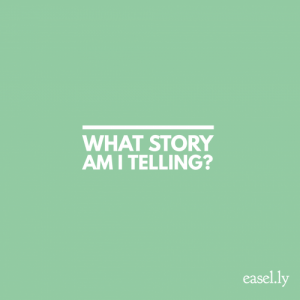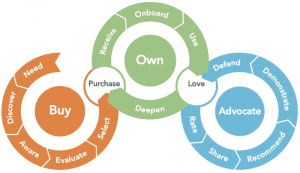The art/business/chaos of understanding Search Engine Optimization (SEO) can be daunting. Especially as popular search engines like Google and Bing consistently refine their algorithm. But regardless of what goes into crafting their super-secret special sauce, here’s an A-Z list of terms that will help explain what SEO is all about, and can also assist with improving your own rankings:
Average Visit Time: one of the primary factors that search engines use to rank your webpage is how much time users spend on your site. In other words, even Google incorporates that same advice you’ve been hearing ever since you were a child: quality over quantity…
Bounce Rate: the percentage of visitors who enter your site and then immediately exit. In SEO terms, this the equivalent of a blind date showing up, giving a fake name and then getting the heck out of there.
Click-Through Rate: the number of clicks that an online advertisement receives divided by the number of times the ad is shown (Clicks ÷ Impressions = CTR). As we learned from A and B, not all clicks are created equal; but, still, getting those clicks is great start.
Diversity: when it comes to links (both inward and outward) it’s important to try and cultivate a varied selection. Why, exactly, is this so important? Check out this link to learn more from an adorable authority on the subject:
Engagement: don’t think of your website as purely a means to an end, but rather as a two-way street built on the engagement of your visitors/customers. This not only includes direct contact (social media, on-site dialogue, etc.), but also engagement on an implicit level by putting yourself into the shoes of your visitors. If I were them—and visiting my site—what kind of content would I like to see? What would be most helpful? And what would be the easiest and most entertaining way to absorb that information?
Fresh Content: just like any other form of ranking (i.e. College Football’s Top 25, People’s 50 Most Beautiful People), it’s not just a measure of what you have done, but very much a matter of what-have-you-done-for-me-lately. So, to stay relevant, or continue rising in SEO rankings, it’s important to constantly update your site with fresh content.
Graphics: Whereas books contain nothing but words, and television is ultimately an image-driven medium, the beauty of the Internet is that it merges the best of these two worlds. Deep down, we all know this—it explains why we love lists with gifs—but too often when it comes to our own webpage we forget the importance of the visual component. So whether it’s photos, videos or animated sequences (or even charts or graphs), don’t forget that visuals will help bring your content to life.
Hosting: SEO hosting is the business of using methods (like those listed here) to optimize a website and increase its traffic/sales. Some SEO hosts go as far as to provide content creation, whereas others simply focus on harnessing the power of what’s already there. SEO hosting definitely isn’t for everyone, but it’s a quickly growing industry and something to keep on your radar.
Index: if you think of Google as a librarian—kindly pointing you towards the information you seek—then think of the “index” as the library itself. The index refers to the billions of web pages that Google has crawled through and catalogue in their database. If your website is searchable through Google, then it’s in Google’s Index. But, if for some technical reason your page isn’t part of the index, then the librarian won’t be able to point folks in your direction. So double-check that your website is part of Google’s Index by typing your full URL into the search bar and confirming that your page pops up. If it does not, then here’s some info on what to do next:
Javascript: an object-oriented computer programming language–often used to create interactive effects within web browsers—that is included on this list for cautionary purposes. Although javascript is popular amongst web designers and programmers, it’s not very friendly to search engine web crawlers and, as a result, can hurt rankings. All of which is a reminder to say that it’s not just what you say, or even how you say it, but it’s also how that message is programmed that you need to be conscious about.
Keywords: as the name suggests, these are the key words and phrases on your webpage that enable visitors to find you through search engine results. Ranking the right terms and phrases can make of break your site, which is why it’s important to research your industry’s keywords so you know exactly what to target. Or, to put this in terms of an archery analogy: make sure the target your aiming at is actually the bullseye.
Landing Page: although your website undoubtedly includes a variety of pages, there is only one landing page (sometimes also referred to as an “entry page”). This is basically the must-impress, here’s-what-we’re-all-about lobby of your hotel; your chance to welcome people inside, explain what you’re all about and entice them to stay a while. So, while crafting a landing page, keep in mind two unique kinds of visitors: those arriving for the first time (where an initial impression is everything) and your “regular” guests (who will constantly being the same thing each time).
Meta Tags: a special kind of HTML tag that provides information about a web page. But unlike normal HTML tags, meta tags do not affect how a page is displayed. Instead, these hidden-from-the-user labels communicate directly with search engines; providing information like how frequently a webpage is updated, a summary of the page’s content and, perhaps most importantly, keywords that represent the information displayed.
Tune in next time for N-Z…
(115)







